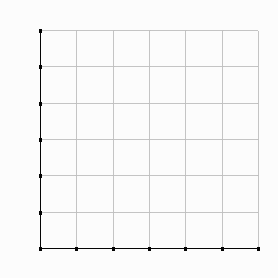Example 1: Tax on gasoline
2/2009: CA raised gas taxes by 12 cents per gallon

|
Wednesday, February 20, 2013 |
II. Consumer demand
B. Extensions and
applications of consumer theory
3. Measuring changes in consumer welfare
Learning objectives: Explain and illustrate compensating variation (CV), relate it to changes in consumer surplus, and apply it to two-part pricing.
Compensating
variation (CV) (Also called "willingness-to-pay" analysis.)
CV is the general equilibrium parallel to
DCS
in demand curve diagrams.
Drawback to consumer surplus: partial
equilibrium--only see one market at a time.
A more complete and precise analysis of consumer welfare requires us to make use of
a
general equilibrium framework instead: budget lines and indifference curves.
(Available online: Measuring welfare
changes)
Example: worksheet -- first do just parts 1-3 for the top diagram
Compare a and a':
? How does your utility at a compare to
your utility at a'?
? How does the money income you need
to reach a' compare to what you need to reach a?
? How much would you be willing to
pay upfront to join a buying club which offers this lower price of videos?
Your maximum willingness-to-pay (WtP) for the
price reduction
= Ia - Ia' = compensating variation (CV)
Compensating variation (CV)
= the change in money income (I) which is exactly sufficient to leave utility unaffected by
a price change.
Key result: If a 'discount buying club' tries to collect more than the compensating variation (CV) associated with the price discount, the consumer will be worse off after the price change and won't join. If it collects any less, the consumer will end up better off than before.
Now complete the lower diagram and questions 4 and 5.
Note1: CV corresponds to
DCS
CV appears in top diagram
DCS
appears in the bottom diagram
Note, though, that the demand curve differs from the demand curve we usually draw
"Marshallian" demand curve
holds money income constant--that's what we usually
draw
"Hicksian" or "income-compensated" demand curve holds real
income (utility) constant
Only a Hicksian demand curve measures true
willingness-to-pay for a price change.
Note that the Hicksian demand curve reflects only the
substitution effect of a price change and therefore always slopes down.
Note2: how to carry out two-part
pricing:
(1) Offer a discounted price
(here: $1 instead of $2)
(2) Charge an offsetting access fee = CV
(here: $9)
4. Policy applications
Learning objectives: Use indifference curve / budget line diagrams to illustrate and compare government policies such as taxes and subsidies.
? If the government offered you aid, which would you prefer, $1,000 or a basket of food that costs the government the same amount?
The U.S. has a variety of aid programs: cash and
in-kind.
Economic analysis suggests that you can't just add them together, which
makes it tricky to figure out how much good government programs really do.
Most market-specific policies =
(1) taxes, making buyers pay a price above what sellers get to cover
costs
(2) subsidies, where buyers a price lower than what sellers get to
cover costs.
Both taxes and subsidies create 2 prices.
To analyze the perceived costs and true costs, we have to consider the
impact on both consumers and the government.
We can then compare results to what would happen if we tried to reach our goals with income taxes or income subsidies instead.
Simplifying assumption: programs that affect a targeted group of consumers do not change the prices paid by others not covered by the policy.
| Policies and BLs: Example 1: Tax on gasoline 2/2009: CA raised gas taxes by 12 cents per gallon |
 |